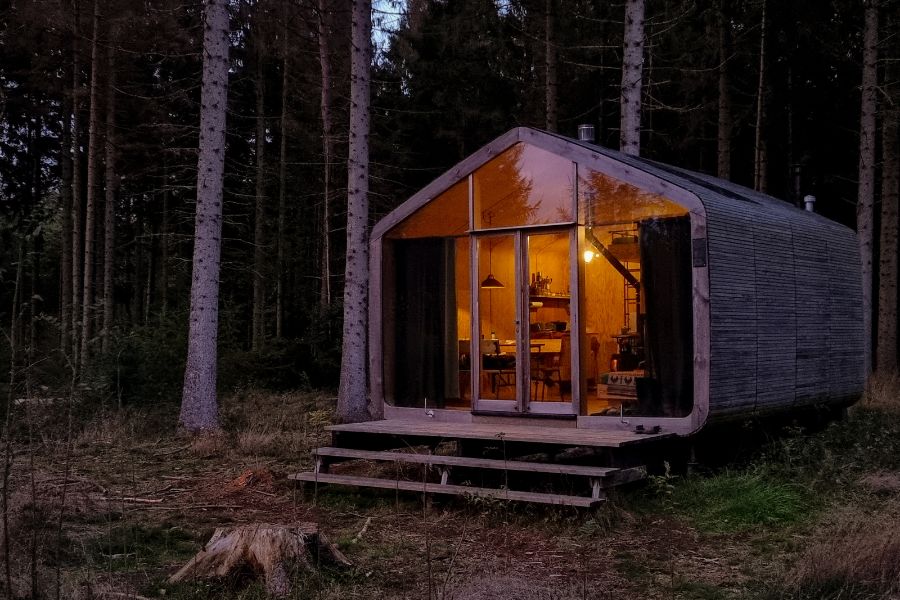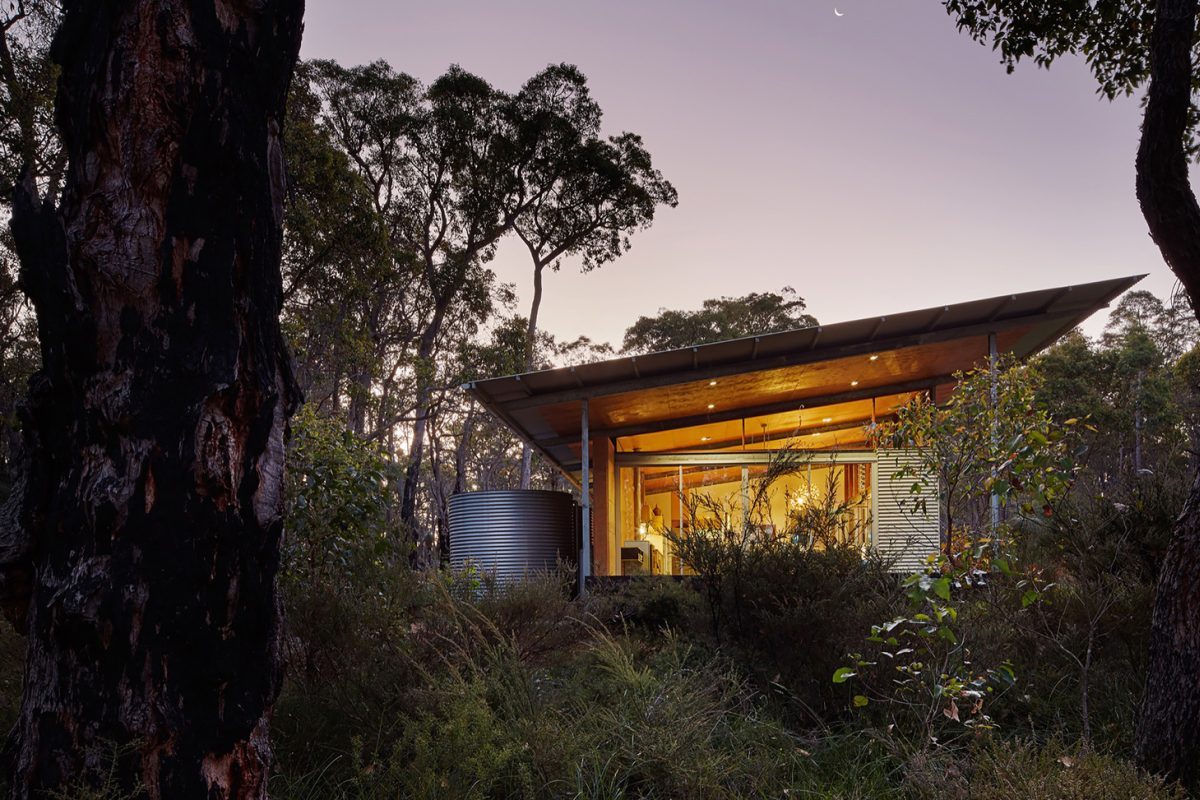Living off the grid holds a certain allure in today’s fast-paced, interconnected world. Disconnecting from the hustle and bustle of urban life, finding solitude in the wilderness, and living self-sufficiently is a dream for many. With its vast and pristine landscapes, Canada offers an ideal setting for those wishing to embark on this unique lifestyle. All you need is the right information and maybe an off-grid solar system.
In this article, we’ll explore the basics of living off-grid in Canada, from choosing the right location to building a sustainable homestead.
Choosing the Right Location
Choosing the right location is one of the first and most crucial steps when considering off-grid living in Canada. The country’s diverse climate and geography offer a range of options, each with its challenges and advantages. Here are a few key considerations:
1. Climate
When living off the grid in Canada, climate plays a pivotal role in shaping your experience. This diverse nation offers a broad spectrum of weather conditions, making it essential to align your choice of location with your off-grid goals. If you’re seeking to make the most of solar power and embrace the benefits of off-grid living, the southern regions of British Columbia should be on your radar. With their relatively milder winters, these areas are well-suited for harnessing solar energy through solar panels.
Conversely, the northern territories, known for their harsh winters, might pose more significant challenges for those aiming to create sustainable off-grid houses. The long, cold months can impact your ability to grow food, access water, and manage energy efficiently. Therefore, carefully considering your climate preferences is vital as you embark on your off-grid living adventure in the Great White North.
2. Proximity to Resources
When choosing the ideal location for your off-grid homestead in Canada, proximity to essential resources is a factor that cannot be overlooked. While the allure of remote areas may beckon those seeking solitude and a break from the traditional power grid, practicality remains paramount. Access to critical resources like freshwater sources, medical facilities, and supplies is crucial for ensuring a successful off-grid life.
For those contemplating the installation of a wind turbine or installing solar panels to generate their own electricity, it’s imperative to strike a balance between seclusion and accessibility. Remote areas, while offering unparalleled serenity, often demand meticulous planning. Consider the logistics of transportation and the availability of local services. Ensure that your off-grid oasis doesn’t compromise your access to vital resources, aligns with national building codes, and allows you to achieve your vision of sustainable living without unnecessary hardship
3. Land Ownership and Regulations
When embarking on the off-grid journey in Canada, navigating the intricate landscape of land ownership and regulations is a paramount step. Whether you envision an off-grid cabin nestled in the wilderness or a comprehensive off-grid system, understanding the legal framework of your chosen location is vital.
One crucial aspect to investigate is land ownership. Canada’s vastness means that land policies can vary significantly from province to province. In some regions, you may have the option to buy the land outright, giving you full control over your off-grid paradise. However, in other areas, leasing the land may be the only avenue for those yearning to escape the constraints of the public power grid.
These regulations not only affect your property rights but also impact your ability to live off the grid. Before embarking on your off-grid journey, thorough research and a clear understanding of the legal landscape are imperative to ensure a smooth and legally compliant transition to your self-sufficient lifestyle.
Building an Off-Grid Home
Once you’ve selected your ideal location, it’s time to plan and build your off-grid home. Here are some essential aspects to consider:
1. Energy Generation
Living off the grid is synonymous with self-sufficiency; at its core, this lifestyle hinges on energy generation. In Canada, a country renowned for its vast and varying landscapes, the options for powering your off-grid homes are diverse. Whether you’re drawn to the eco-friendly allure of solar power, the steady hum of wind turbines, or the ability of hydroelectric systems, your choice should reflect the renewable energy potential in your chosen area.
For those dedicated to the ideals of off-grid living, solar panels emerge as a favored option. The abundant sunshine in many parts of Canada provides a consistent source of solar power, making it a reliable choice for generating electricity in your off-grid homes. Wind turbines, driven by the relentless breezes that sweep through various regions, are equally attractive for off-grid living enthusiasts. Hydroelectric systems, harnessing the strength of flowing water, provide yet another viable path to self-sufficiency.
Before making your final decision, evaluating the renewable energy potential in your specific location is crucial. Factors such as average sunlight hours, wind patterns, and proximity to water sources should all be considered. By investing in a reliable and appropriate energy generation system, you can fully embrace the ethos of living off the grid, ensuring a sustainable and autonomous power supply for your off-grid lifestyle.
2. Water Supply
To live off-grid means not only generating your power but also securing your water supply, a fundamental element of off-grid living. Off-grid residents typically rely on ingenious methods like rainwater harvesting and well systems to meet their water needs, fostering sustainability in their off-grid lifestyle.
Rainwater harvesting involves collecting and storing rainwater that falls on your property, efficiently using a natural resource. On the other hand, well systems tap into underground water reservoirs, providing a reliable source of clean water for your off-grid living needs.
To ensure the safety of your water supply, it’s crucial to incorporate an efficient water filtration and purification system. This system will remove impurities, making the water safe for consumption, cooking, and other daily activities in your off-grid home.
By meticulously planning and implementing these water supply solutions, you can enjoy a safe and sustainable water source, enhancing the self-sufficient essence of living off the grid.
3. Waste Management
Living off the grid isn’t just about generating power and sourcing water sustainably; it also entails responsible waste management. This crucial aspect reduces your environmental impact and maintains the cleanliness and sustainability of your off-grid living space.
Two innovative waste management solutions for living off the grid include composting toilets and greywater recycling systems. Composting toilets are a game-changer, turning human waste into nutrient-rich compost, which can be used to enrich your off-grid garden. This minimizes the need for traditional sewage systems and contributes to a self-sufficient, eco-friendly lifestyle.
Greywater recycling systems take it further by reusing wastewater from sinks, showers, and laundry for non-potable purposes, like watering plants or flushing toilets. This dual-pronged approach to waste management reduces your environmental footprint and enhances the sustainability and cleanliness of your off-grid home, embodying the true spirit of living off-grid.
off
4. Sustainable Construction
Sustainable construction is not just an environmentally conscious choice but a practical necessity when you’re dedicated to living off-grid. It’s essential to consider the materials you use for their ecological impact and compatibility with your off-grid lifestyle.
Choosing sustainable and locally sourced building materials minimizes your carbon footprint and supports the local economy. Materials like reclaimed wood, bamboo, or recycled steel can help you construct an eco-friendly, efficient, off-grid house. Furthermore, locally sourced materials are often more readily available and can reduce transportation costs.
However, while you aim for sustainability, you must also adhere to local building codes and regulations. These codes may vary across Canada, and it’s crucial to ensure that your construction not only aligns with your off-grid aspirations but also meets the legal requirements of your chosen location. Finding the right balance between sustainability and local compliance can create a resilient and eco-conscious home that reflects your commitment to living off-grid.

Food Production and Sustainability
To truly live off the grid, you’ll want to cultivate your food sources. This means setting up a garden and possibly raising livestock. Here are some tips for becoming self-sufficient in terms of food:
1. Gardening
In living off-grid, gardening is more than just a hobby; it’s a cornerstone of self-sufficiency. To cultivate your own food year-round, particularly in regions with challenging climates, thoughtful strategies are essential. Depending on your specific location and its climate, constructing a greenhouse can be a game-changer. Greenhouses provide a controlled environment, shielding your plants from harsh weather conditions and extending the growing season well into colder months.
Additionally, selecting cold-hardy plant varieties suited to your climate is paramount. These robust plants are more likely to thrive in adverse conditions, ensuring a more consistent food supply for your off-grid living.
Educating yourself about local flora can be equally advantageous, as it can help you understand the ecosystem around you and the potential sources of wild edibles. By implementing these practices, you’ll be better equipped to create a self-sustaining food source, a vital component of the off-grid living experience.
2. Livestock
When it comes to off-grid living, integrating livestock into your self-sufficiency plan can significantly enhance your sustainability. Raising animals such as chickens, goats, or cows can provide a consistent source of essential foodstuffs like eggs, milk, and meat, reducing your reliance on external sources. Chickens are a popular choice for beginners in off-grid animal husbandry due to their compact size and low maintenance. They offer a regular supply of fresh eggs and can help control pests in your garden.
Goats are hardy and versatile, providing milk, fiber, and meat. Goats can thrive in various climates and are well-suited to off-grid living. Cows, while larger and requiring more space and resources, offer a substantial supply of milk and meat. However, they are best suited for those with ample land and experience in livestock care.
It’s essential to ensure that you have adequate space, resources, and knowledge to care for your animals properly. Responsible animal husbandry is vital for their well-being and integral to a successful off-grid life.
3. Preserving and Storing Food
Preserving and storing food is vital when embracing off-grid living in Canada. With its diverse climate and sometimes limited growing seasons, extending the shelf life of your harvest is essential for year-round self-sufficiency. Canning, a time-honored technique, involves sealing food in jars or cans and preserving it through heat treatment. This method can protect your fruits, vegetables, and meats from spoilage.
Freezing is another practical approach for storing food. It requires a reliable off-grid energy source but can maintain the freshness of produce, meat, and even prepared meals. Drying is a simple yet effective way to preserve food. Fruits, vegetables, and herbs can be dehydrated, reducing moisture content and inhibiting microbial growth.
Mastering these preservation techniques reduces waste and ensures a consistent food supply during lean times. In the context of off-grid living in Canada, it’s a valuable skill that enhances self-sufficiency and minimizes reliance on external food sources.
Adapting to the Off-Grid Lifestyle
Living off the grid in Canada is challenging, but it can be a deeply rewarding and sustainable way of life. Here are some final tips for adapting to this unique lifestyle:
1. Self-Sufficiency Skills
Acquire a range of skills, from basic carpentry to first aid. The more self-reliant you are, the smoother your off-grid experience will be.
2. Community Involvement
Join local off-grid or sustainable living communities. These groups can provide invaluable support, share knowledge, and offer a sense of belonging.
3. Patience and Flexibility
Understand that living off the grid can be unpredictable. Be patient and adaptable, as you’ll encounter challenges along the way.
Conclusion
Living off the grid in Canada is a journey that requires careful planning, dedication, and a strong connection to the land. While it may not be for everyone, the rewards can be immeasurable for those drawn to a more sustainable and self-reliant way of life. By choosing the right location, building a sustainable home, and embracing self-sufficiency, you can embark on an off-grid adventure that truly connects with nature and lives in harmony with the Canadian wilderness.




